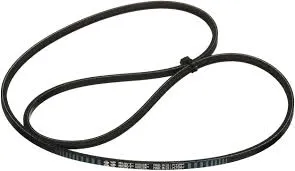- Arabic
- French
- Russian
- Spanish
- Portuguese
- Turkish
- Armenian
- English
- Albanian
- Amharic
- Azerbaijani
- Basque
- Belarusian
- Bengali
- Bosnian
- Bulgarian
- Catalan
- Cebuano
- Corsican
- Croatian
- Czech
- Danish
- Dutch
- Afrikaans
- Esperanto
- Estonian
- Finnish
- Frisian
- Galician
- Georgian
- German
- Greek
- Gujarati
- Haitian Creole
- hausa
- hawaiian
- Hebrew
- Hindi
- Miao
- Hungarian
- Icelandic
- igbo
- Indonesian
- irish
- Italian
- Japanese
- Javanese
- Kannada
- kazakh
- Khmer
- Rwandese
- Korean
- Kurdish
- Kyrgyz
- Lao
- Latin
- Latvian
- Lithuanian
- Luxembourgish
- Macedonian
- Malgashi
- Malay
- Malayalam
- Maltese
- Maori
- Marathi
- Mongolian
- Myanmar
- Nepali
- Norwegian
- Norwegian
- Occitan
- Pashto
- Persian
- Polish
- Punjabi
- Romanian
- Samoan
- Scottish Gaelic
- Serbian
- Sesotho
- Shona
- Sindhi
- Sinhala
- Slovak
- Slovenian
- Somali
- Sundanese
- Swahili
- Swedish
- Tagalog
- Tajik
- Tamil
- Tatar
- Telugu
- Thai
- Turkmen
- Ukrainian
- Urdu
- Uighur
- Uzbek
- Vietnamese
- Welsh
- Bantu
- Yiddish
- Yoruba
- Zulu
Jan . 01, 2025 08:04 Back to list
Understanding the Importance of Timing Belt Tensioners in Engine Performance and Maintenance
Understanding Timing Belt Tensioners Importance, Functionality, and Maintenance
The timing belt is a crucial component of an internal combustion engine, responsible for synchronizing the rotation of the crankshaft and camshaft. This synchronization ensures that the engine's valves open and close at the correct times during each cylinder's intake and exhaust strokes. To maintain optimal performance and longevity of this vital component, timing belt tensioners play an indispensable role. This article will delve into the importance, functionality, and maintenance of timing belt tensioners.
What is a Timing Belt Tensioner?
A timing belt tensioner is a mechanical device designed to maintain the correct tension on the timing belt. This tension is critical to prevent slippage and ensure that the belt remains in alignment with the pulleys it interacts with. There are two primary types of timing belt tensioners manual and automatic. Manual tensioners require periodic adjustments by the mechanic, while automatic tensioners are spring-loaded and self-adjust to maintain the necessary tension.
Importance of Timing Belt Tensioners
The importance of timing belt tensioners cannot be overstated. A properly tensioned timing belt ensures smooth engine operation, preventing misalignments that could lead to catastrophic engine failures. If the timing belt is too loose, it may skip teeth on the gears, leading to a loss of synchronization. This situation can result in valve and piston collisions, causing severe engine damage that can be costly to repair.
Conversely, a belt that is too tight can wear prematurely, leading to increased strain on the belt and associated components, such as the water pump and manifold. Therefore, the timing belt tensioner is critical in balancing tension to ensure both performance and durability.
Functionality of Timing Belt Tensioners
Timing belt tensioners work by applying constant pressure to the timing belt, ensuring it remains taut. Automatic tensioners typically employ a spring mechanism that adjusts itself based on the belt's wear and stretch. As the timing belt ages, it tends to elongate, and the tensioner compensates for this elongation to maintain proper tension.
The tensioner also absorbs vibrations and mitigates any noise produced by the running engine. This functionality is crucial as it contributes to a quieter, smoother running engine, enhancing the overall driving experience.
Signs of a Failing Timing Belt Tensioner
timing belt tensioner

Knowing when to replace or adjust a timing belt tensioner is essential for preventing significant engine damage. Common signs of a failing tensioner include
1. Increased Noise A rattling or grinding noise from the engine compartment could indicate that the tensioner is not adequately holding the timing belt tension.
2. Slipping or Jumping Belt If you notice the timing belt slipping, especially during acceleration, it may be a sign that the tensioner has failed.
3. Visible Wear and Tear Inspecting the tensioner for cracks, rust, or excessive wear can help identify potential issues before they cause engine damage.
4. Engine Performance Issues Misfires, rough idling, or a decrease in power might occur if the timing belt is not correctly tensioned.
Maintenance and Replacement
To ensure the longevity of your timing belt and tensioner, regular maintenance is vital. Most manufacturers recommend replacing the timing belt and tensioner every 60,000 to 100,000 miles, depending on the vehicle make and model. During this replacement, it's also advisable to inspect and replace any associated components, such as idler pulleys and water pumps, to prevent future issues.
Additionally, routine checks on the tensioner's condition can prevent unexpected failures. If any signs of wear or abnormal noise occur, it's best to consult a qualified mechanic to assess the situation and determine if replacement is necessary.
Conclusion
In summary, timing belt tensioners play a pivotal role in the proper function of an engine by ensuring the timing belt maintains the appropriate tension. Neglecting the maintenance of these components can lead to severe engine damage, costing car owners both time and money. Regular inspections, awareness of warning signs, and timely replacements can help preserve the performance and reliability of the engine, ensuring a safer and smoother driving experience.
-
Korean Auto Parts Timing Belt 24312-37500 For Hyundai/Kia
NewsMar.07,2025
-
7PK2300 90916-T2024 RIBBED BELT POLY V BELT PK BELT
NewsMar.07,2025
-
Chinese Auto Belt Factory 310-2M-22 For BMW/Mercedes-Benz
NewsMar.07,2025
-
Chinese Auto Belt Factory 310-2M-22 For BMW/Mercedes-Benz
NewsMar.07,2025
-
90916-02660 PK Belt 6PK1680 For Toyota
NewsMar.07,2025
-
drive belt serpentine belt
NewsMar.07,2025

